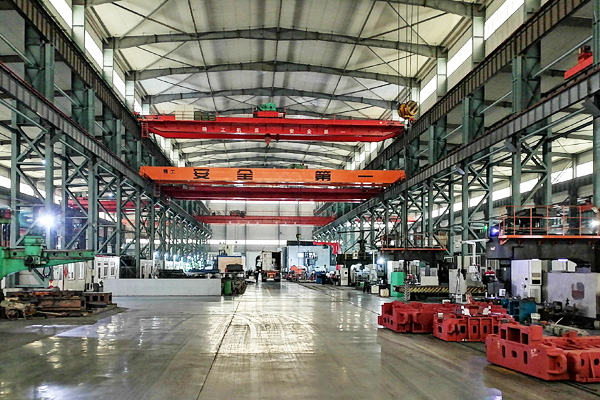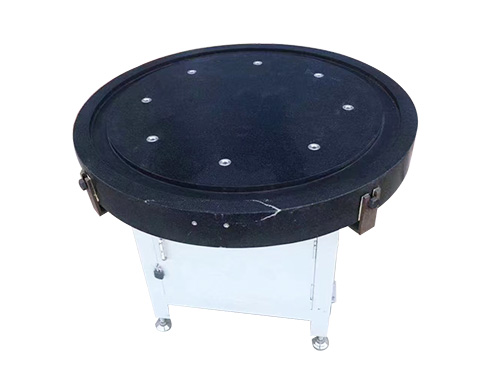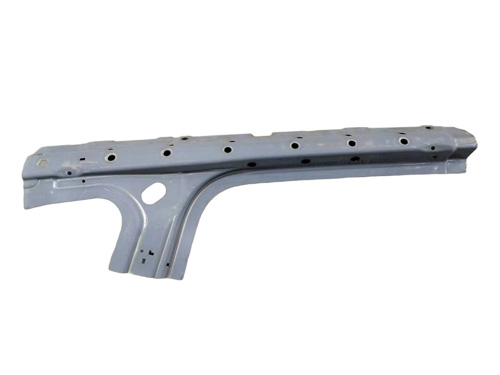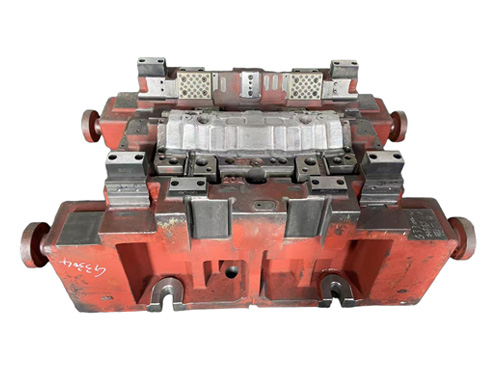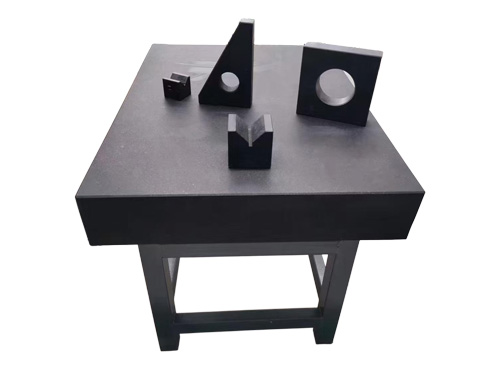News Detail
In-depth Analysis of the Core Functions and Application Scenarios of Cast Iron Platforms in Mechanical Processing
author:hxrtools Time:2025-06-04 15:25:09 Click:99
In the field of mechanical processing, every precise forming of parts and every rigorous advancement of processes rely on the support of reliable basic equipment. With its unique performance advantages, the cast iron platform has become an indispensable and crucial component in mechanical processing. From precision measurement to complex assembly, the cast iron platform runs through the entire production process, providing solid guarantees for product quality and production efficiency.
I. Introduction: The Industry Status of Cast Iron Platforms
1.1 Upgrading Demands for Basic Equipment in the Mechanical Processing Industry
As the manufacturing industry advances towards higher precision and efficiency, mechanical processing has placed increasingly stringent requirements on the precision, stability, and reliability of basic equipment. In complex processing environments, equipment that can provide stable reference surfaces and strong load-bearing capacities has become the key to ensuring smooth production, and the importance of cast iron platforms has become more prominent.
1.2 Unique Advantages of Cast Iron Platforms
Cast iron platforms stand out among numerous basic equipment due to their excellent casting performance, outstanding shock absorption, and good wear resistance. The special graphite structure within cast iron gives it remarkable shock-absorbing effects. Its high hardness enables it to effectively resist long-term friction and wear, and its reasonable structural design provides it with strong load-bearing capacity. These advantages make it an ideal choice for the mechanical processing industry.
1.3 Core of This Article: Analyzing Core Functions and Application Scenarios
This article focuses on the core functions of cast iron platforms in mechanical processing, delves into their application methods in different scenarios, and comprehensively demonstrates the significant value of cast iron platforms to the mechanical processing industry.
II. Basic Understanding of Cast Iron Platforms
2.1 Equipment Definition and Functional Overview
A cast iron platform is a planar reference tool primarily made of cast iron and manufactured through processes such as casting and machining. Its main function is to provide a stable and precise planar reference for measurement, scribing, assembly, and other operations in mechanical processing, ensuring that the dimensional accuracy and geometric tolerances of workpieces meet standard requirements.
2.2 Core Component Characteristics
Cast Iron Material Properties: The graphite structure within cast iron acts like a natural shock absorber, effectively absorbing vibrations and impacts generated during processing and reducing their impact on processing precision. At the same time, the high hardness and wear resistance of cast iron make it resistant to wear during long-term use, maintaining the precision of the platform's reference surface.
Platform Structural Design: Scientific rib layouts and box-type structural designs greatly enhance the rigidity and load-bearing capacity of the platform. This structural design can evenly distribute load pressures, allowing the platform to remain stable and resistant to deformation even under heavy loads.
2.3 Classification of Mainstream Products
Classification by Precision Grade: It covers multiple precision grades such as Grade 0, Grade 1, and Grade 2. Grade 0 has the highest precision and is suitable for ultra-precision measurement and calibration. Grade 1 meets the high-precision processing requirements of precision instrument manufacturing. Grade 2 is suitable for general mechanical processing and assembly operations.
Classification by Usage: It includes measuring platforms, scribing platforms, assembly platforms, etc. Measuring platforms emphasize high-precision flatness and are used for accurate measurement of workpiece dimensions. Scribing platforms highlight the wear resistance of the working surface to facilitate scribing operations on workpieces. Assembly platforms focus on strong load-bearing capacity to support the assembly of large components.
2.4 Analysis of Key Technical Parameters
Flatness: Flatness is a key indicator for measuring the precision of a cast iron platform, reflecting the flatness of its working surface. The higher the flatness, the more precise the reference provided for the workpiece, and the smaller the processing error.
Load-bearing Capacity: Load-bearing capacity is determined by the material, structure, and size of the platform, indicating the maximum weight the platform can withstand. In actual use, it is necessary to select a platform with an appropriate load-bearing capacity according to the weight and force conditions of the processed workpiece to ensure safety and stability.
Hardness: Appropriate hardness enables the cast iron platform to effectively resist friction and impacts from workpieces while facilitating precision repair when necessary. The hardness index directly affects the service life and maintenance cost of the platform.
III. Core Functions of Cast Iron Platforms in Mechanical Processing
3.1 Providing a Stable Reference to Ensure Processing Precision
In mechanical processing, precision is the lifeline of product quality. Cast iron platforms, with their high flatness and stable performance, provide precise reference surfaces for measuring tools. Whether using a dial indicator to measure the geometric tolerances of workpieces or a caliper to measure dimensions, cast iron platforms can ensure the accuracy of measurement results, thereby providing a reliable basis for subsequent processing, effectively controlling processing errors, and guaranteeing product precision.
3.2 Supporting Workpieces and Complex Processing Operations
During mechanical processing, the clamping and processing of workpieces require stable support. The strong load-bearing capacity of cast iron platforms can withstand the weight of heavy workpieces and the cutting forces generated during processing. In processes such as milling and grinding, the platform provides a stable support for workpieces, allowing the processing equipment to operate smoothly, ensuring the smooth progress of the processing process, and also contributing to improving the service life of the equipment.
3.3 Assisting in Workpiece Positioning and Fixing
The surface of a cast iron platform is designed with T-slots, bolt holes, etc., enabling it to be used in conjunction with various types of tooling fixtures to achieve rapid positioning and firm fixing of workpieces. In batch processing or the processing of complex workpieces, precise positioning and fixing can reduce the clamping time of workpieces, improve production efficiency, and also ensure the processing consistency of workpieces in the same batch.
3.4 Shock Absorption to Reduce Equipment Wear
Processing equipment generates vibrations during operation. These vibrations not only affect processing precision but also accelerate the wear of the equipment. The shock-absorbing properties of cast iron platforms can effectively buffer the vibrations generated by processing equipment, reducing their impact on the equipment and workpieces. This not only helps to improve processing quality but also extends the service life of processing equipment, reducing the enterprise's equipment maintenance costs.
IV. Diverse Application Scenarios of Cast Iron Platforms
4.1 Precision Measurement Scenarios
In fields with extremely high precision requirements, such as precision instrument manufacturing and aerospace component processing, Grade 0 or Grade 1 cast iron measuring platforms are indispensable tools. They provide stable reference planes for precision measuring equipment such as coordinate measuring machines and height gauges, ensuring accurate measurement of the dimensions, shapes, and positions of workpieces and guaranteeing that products meet high-precision standards.
4.2 Scribing Operation Scenarios
In the preliminary preparation stage of mechanical processing, scribing platforms play an important role. Technicians use tools such as scribing needles and height gauges on scribing platforms to draw processing contour lines, center lines, etc., on the workpiece surface according to design drawings. The wear resistance and good flatness of the scribing platform's working surface ensure the accuracy of scribing, providing clear guidance for subsequent processing.
4.3 Component Assembly Scenarios
In the assembly process of mechanical products, assembly platforms are used to support and fix components, ensuring the accurate relative positions of various parts. For the assembly of large mechanical equipment, such as machine tools and engineering machinery, cast iron assembly platforms, with their strong load-bearing capacity and stability, can withstand the weight of multiple components and the forces generated during the assembly process, ensuring the smooth progress of assembly work and improving assembly quality and efficiency.
4.4 General Mechanical Processing Scenarios
In general mechanical processing workshops, Grade 2 cast iron platforms are widely used in various processing procedures. Whether it is turning, drilling, or boring, cast iron platforms can serve as temporary workbenches, providing a stable support surface for workpieces and facilitating the clamping and adjustment of workpieces by operators to meet the basic needs of daily mechanical processing.
V. Selection and Usage Recommendations
5.1 Scientific Selection Based on Needs
Precision Matching: Select platforms with corresponding precision grades according to processing precision requirements. High-precision processing tasks should use Grade 0 or Grade 1 platforms; for general processing, Grade 2 platforms can be selected to reasonably control costs while ensuring processing quality.
Size and Load-bearing Considerations: Select platforms with appropriate sizes and load-bearing capacities according to the size and weight of workpieces. Ensure that the platform size can accommodate the workpiece and leave sufficient operating space; the load-bearing capacity should meet the weight of the workpiece and the load generated during processing.
5.2 Supplier Selection and Quality Control
Choose suppliers with production qualifications and quality certifications. Judge product quality by reviewing product quality inspection reports and conducting on-site inspections of production processes. High-quality cast iron platforms should have a flat and smooth surface free from casting defects such as sand holes and air holes, and their precision indicators should meet standard requirements.
5.3 Standardized Installation and Maintenance
Install the platform in a dry, flat, and vibration-free environment, and use a level to calibrate the platform's levelness. During daily use, regularly clean the iron filings and oil stains on the platform's surface, avoid tapping operations on the platform to prevent damage to the working surface, and regularly check the platform's structural stability, promptly addressing any issues found to ensure that the platform always maintains a good operating condition.
VI. Industry Trends and Future Outlook
6.1 Technological Innovation Directions
Application of High-precision Processing Technologies: In the future, cast iron platforms will adopt more advanced processing technologies, such as CNC grinding and laser calibration, to further improve the flatness and surface quality of the platforms, meeting the ever-increasing precision requirements of ultra-precision manufacturing fields.
Expansion of Intelligent Functions: With the development of the Internet of Things and sensor technologies, cast iron platforms will integrate intelligent monitoring functions, collecting real-time data on platform deformation, wear, load-bearing, etc., and achieving fault warnings and performance optimization through data analysis, making platform maintenance more intelligent and precise.
6.2 Changes in Market Demand
Growth of Personalized Customization Demands: Different industries and enterprises have different requirements for the size, precision, and functions of cast iron platforms. Personalized customization will become an important trend to meet diverse market demands. Suppliers need to have stronger customized service capabilities to adapt to market changes.
Special Demands from Emerging Industries: The rapid development of emerging industries such as new energy and semiconductors has put forward new requirements for the performance of cast iron platforms. For example, demands for the platform's corrosion resistance, lightweight, and cleanliness will drive the continuous upgrading and iteration of cast iron platform products.
6.3 Green Environmental Protection and Sustainable Development
Against the backdrop of increasingly stringent environmental protection policies, cast iron platform manufacturing enterprises will pay more attention to the application of green manufacturing processes. Measures such as using environmentally friendly casting materials, reducing pollutant emissions during the production process, and improving resource recycling rates will become important directions for industry development, achieving a win-win situation for economic and environmental benefits.
VII. Conclusion: An Indispensable Cornerstone of Mechanical Processing
Cast iron platforms, with their core functions and diverse application scenarios, have become the cornerstone of the stable operation of the mechanical processing industry. From ensuring processing precision to supporting complex operations, and from precision measurement to general processing, cast iron platforms play an irreplaceable role in every link. With the continuous progress of industry technology and changes in market demand, cast iron platforms will also continue to innovate and develop. Understanding their core value and application points, and selecting and using them reasonably, will provide strong support for mechanical processing enterprises to enhance their competitiveness and achieve high-quality development.
 HOT PRODUCTS
HOT PRODUCTS
 CONTACT US
CONTACT US
—— E-mail:project@haoranmj.com
—— Whatsapp:+86 18932785670
—— Tel:+86 18932785670
—— Add:Across from Sanjing Distillery on Road 4, Botou Economic Development Zone, Cangzhou City, Hebei Province









